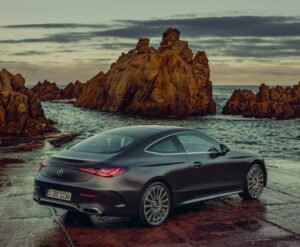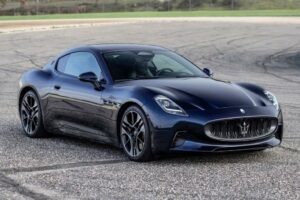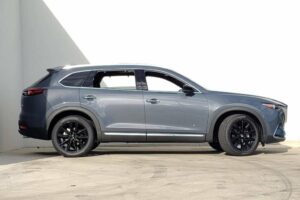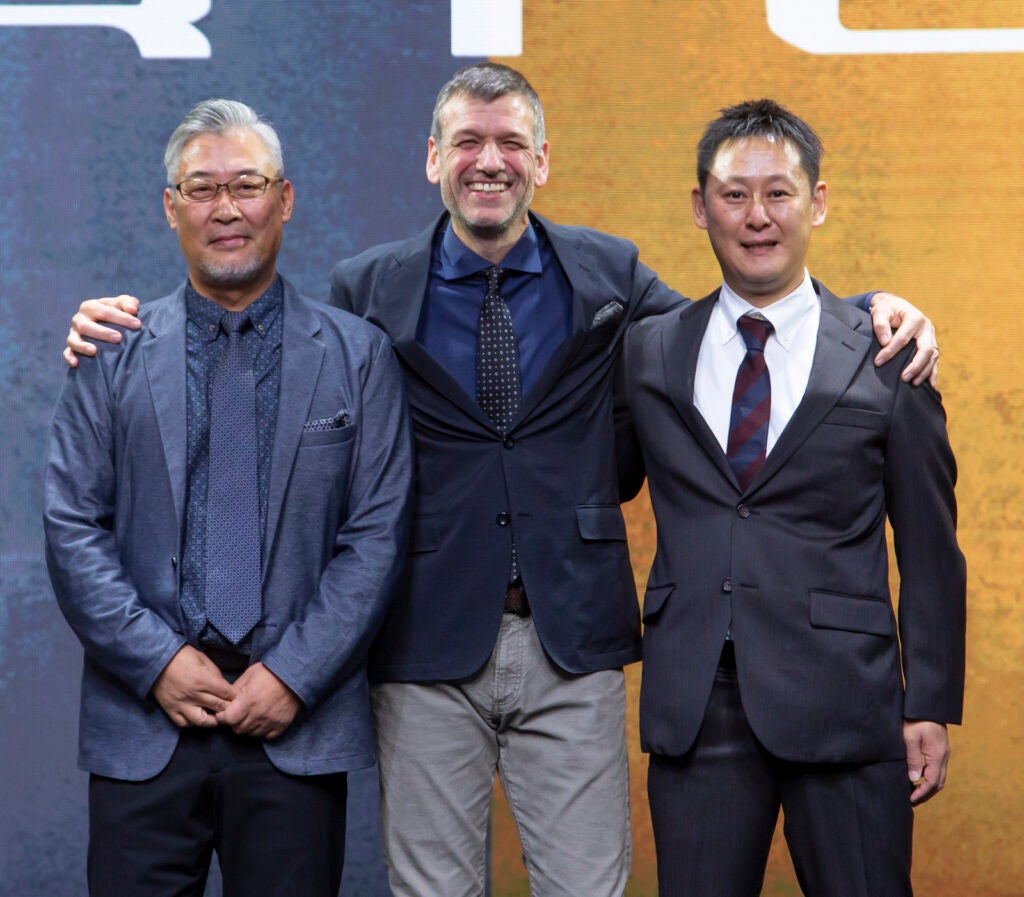
For the fifth generation Toyota Prius, engineers and designers decided to endow the car with a measure of driving fun, something no one would expect from a vehicle designed exclusively for fuel efficiency.
At the new model’s launch last year in California, TheDetroitBureau.com had a chance to talk with the new Prius’ chief engineer, Satoki Oya, to find out why the automaker had a change of heart.
Here’s what he had to say, edited for clarity and length.
The Detroit Bureau: Driving this new Prius was such a sea change from any previous one, how were the priorities for this different from the previous generations
Satoki Oya: A lot of the effort was based on trying to make the design a reality and to give it the performance worthy of that design. Those were the two big points for development.
TDB: So performance was a lot more important in this design than previously?
SO: Yes, absolutely. Yes.
TDB: Was performance even much of a consideration prior to this?
SO: The fourth generation was at the forefront of the TNGA programs, so it was in the back of his mind. And as TNGA matured, it was almost complete and now ready to move into the second generation and then when that happened, all kinds of new possibilities became possible.
TDB: So the drive to improve fuel economy even more was certainly not at the forefront.
SO: Yes.

TDB: One of the things I always remember about previous generations and is they always had almost a very delicate quality to them. And I think that’s something that that is very consciously not in this one.
SO: When you only pursue fuel efficiency, it becomes impossible to realize that design, especially when we’re considering aerodynamics, and so we realized that if we did not change that stance, the Prius would not be reborn.
TDB: You’re helped somewhat by the fact that every Toyota line and now as a hybrid, so the pressure isn’t there to maximize fuel economy. You can now be in something else.
SO: Yes, exactly, and that’s why he felt it’s our duty to show a new kind of hybrid and what the potential of hybrids can be. This time it’s the emotional factor.
TDB: Do you think the typical Prius driver will appreciate that?
SO: To be honest, if a current customer owner who’s only is interested in pure fuel economy will completely understand that, he doesn’t have that much confidence, it’s just it’s a matter of looking at the car and saying it looks cool. It looks beautiful. Still I want the customer to fall in love with it right off the bat love, at first sight, and really wants somebody to fall in love, to be able to drive and enjoy that car.
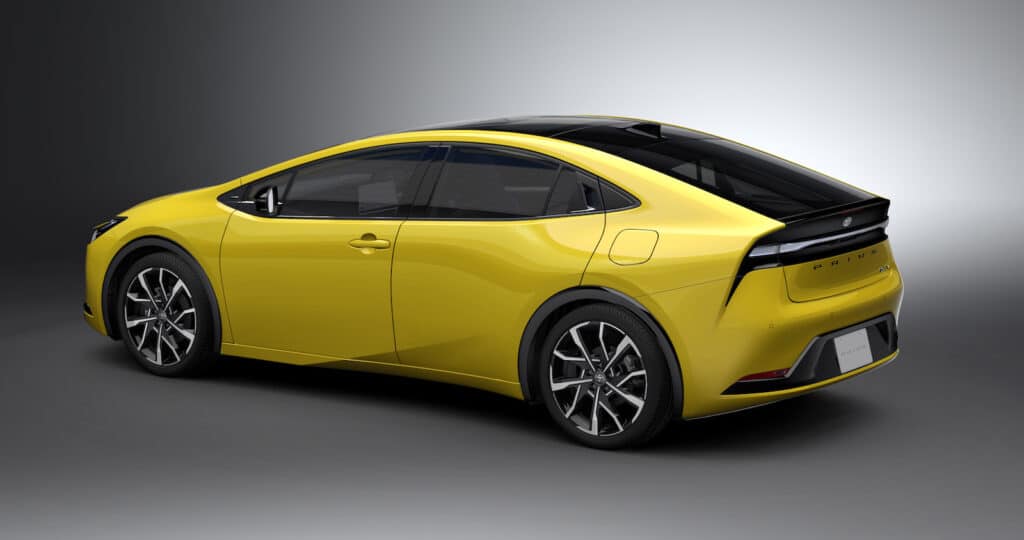
TDB: Was there any thought of trying to maintain the tradition of maximum fuel efficiency?
SO: No, no, not necessarily. There was no plan like that.
TDB: Ok, so it was a very conscious change.
SO: After the fourth generation, the Prius fulfilled its role of proliferating hybrid technology to the masses and delivering it. That was its role. Now, in thinking about in which realm in which to forge forward with for the fifth generation, I thought of trying to make the vehicle more emotional hybrid.
TDB: And this is something even in the fourth generation, you were already thinking of something you wanted to do maybe previously but couldn’t?
SO: It wasn’t as much. That kind of thought process wasn’t active during the cycle of the fourth generation. But as the fourth generation started coming to an end, we realized that then you know what, which direction should we take it now? That thought started coming up.

TDB: The design is such a radical switch from what came before. You’re not in design, but how did design sell this?
SO: It was as simple as the designers brought their first proposition to the development team and everybody was like, we want to make this, we want to build this. So they were really confident. They took that sketch and they went to the executives and they said, ‘we want to build this.’ So, the answer was, ‘okay, so you’re going to make more hybrids more emotional, right? All right, then try it; go.’
TDB: Did the change in direction come a lot easier than expected?
SO: No, as I’m sure you can probably imagine.
TDB: Was Akio Toyoda enthused about this change of direction?
SO: Akio’s assumption was that the Prius was going to continue its role as more of a commodity basis, like a taxi. When we’re thinking in terms of carbon neutrality, if you have more vehicles out there being used as taxis with more mileage, then that’s one way to really contribute to the mass market. For us, we took the took the “Aisha” route; your beloved car, your best friend, your pal.
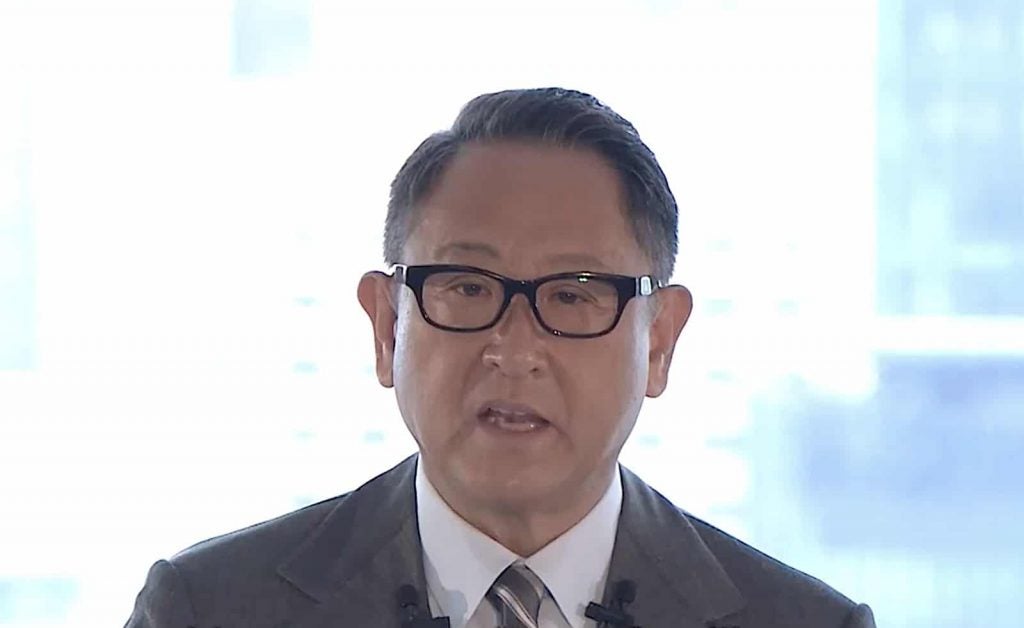
So I believe that Akio at the time probably felt that it’d be difficult to create a good-looking car that can maintain that level of fuel efficiency and fuel economy. And because they had worked so hard on the fourth generation, after watching that, that’s what his belief was.
TDB: It was mentioned that this car isn’t quite as aerodynamic as the previous generation. Obviously, that was not an issue; you didn’t lose a lot because of that change as far as efficiency.
SO: By changing the design, it did affect the coefficient of the CD numbers negatively. However, we were able to lower the overall height of the vehicle, thereby reducing the frontal air resistance of drag. And so when you look at the aerodynamic drag value, which is that surface area multiplied by the CD, it’s actually the same as the force generation. And then, of course, we’ve put a lot of time and work into the air control.
TDB: Well, it seems well worth it. Thank you for your time.
SO: Thank you.
- SEO Powered Content & PR Distribution. Get Amplified Today.
- Platoblockchain. Web3 Metaverse Intelligence. Knowledge Amplified. Access Here.
- Source: https://www.thedetroitbureau.com/2023/01/qa-satoki-oya-2023-toyota-prius-chief-engineer/
- 2020
- 2021
- 2023
- a
- Able
- About
- above
- absolutely
- active
- actually
- affect
- After
- AIR
- All
- already
- Although
- always
- and
- answer
- appreciate
- AREA
- assumption
- back
- based
- basis
- BAT
- beautiful
- because
- becomes
- before
- behind
- being
- belief
- believe
- beloved
- BEST
- Big
- brought
- build
- Bureau
- california
- car
- carbon
- CD
- certainly
- Chance
- change
- changing
- chief
- clarity
- COM
- come
- coming
- commodity
- complete
- completely
- confidence
- confident
- conscious
- consideration
- considering
- continue
- contribute
- control
- Cool
- course
- create
- Current
- customer
- decided
- delivering
- Design
- designed
- Designer
- designers
- Development
- DID
- different
- difficult
- direction
- Doesn’t
- drive
- driver
- driving
- during
- easier
- economy
- efficiency
- effort
- engineer
- Engineering
- Engineers
- enjoy
- especially
- Even
- exactly
- exclusively
- executives
- expect
- expected
- Fall
- Find
- First
- first time
- Force
- forefront
- forge
- Forward
- Fourth
- friend
- from
- Fuel
- fuel efficiency
- fun
- General
- generation
- generations
- Give
- Go
- going
- Gold
- good
- happened
- Hard
- Heart
- height
- helped
- How
- However
- HTTPS
- Hybrid
- important
- impossible
- improve
- in
- interested
- issue
- IT
- Kind
- Know
- Last
- Last Year
- launch
- leaders
- Length
- Level
- Line
- Look
- looking
- LOOKS
- lose
- Lot
- love
- maintain
- make
- manager
- Market
- Mass
- masses
- Matter
- max-width
- Maximize
- maximum
- measure
- mentioned
- mind
- model
- more
- move
- multiplied
- necessarily
- negatively
- New
- numbers
- ONE
- overall
- owner
- performance
- plan
- planet
- plato
- Plato Data Intelligence
- PlatoData
- points
- possibilities
- possible
- potential
- pressure
- previous
- previously
- primary
- Prior
- probably
- process
- Programs
- project
- proposition
- put
- quality
- radical
- ready
- Reality
- realize
- realized
- realm
- Reborn
- reducing
- remember
- Resistance
- Role
- Route
- Said
- same
- SEA
- Second
- Second Generation
- seems
- sell
- senior
- should
- show
- Sight
- Simon
- Simple
- since
- So
- something
- somewhat
- started
- Still
- such
- Surface
- Switch
- Take
- Talk
- team
- Technology
- terms
- The
- their
- thereby
- things
- Thinking
- thought
- time
- to
- toyota
- tradition
- typical
- understand
- us
- value
- vehicle
- Vehicles
- wanted
- watching
- What
- which
- will
- Work
- worked
- worth
- would
- year
- Your
- zephyrnet






